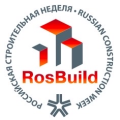Energy use in multifamily buildings can be reduced substantially, with many cost-effective upgrades achieving savings of 15–30% in buildings with five or more residential units. At 2010 national average energy prices, the full expansion of these efficiency upgrade programs would translate into annual utility bill cost savings of almost $3.4 billion for the multifamily sector, nationwide.
Multifamily building owners are among the first to feel the squeeze of rising energy prices. As energy bills rise, upward pressure is put on rents, financial institutions become increasingly concerned about risk to their loan portfolios, and tenants continue to demand comfortable homes. Energy efficiency upgrades provide a solution by improving the bottom line for multifamily building owners, decreasing pressure on rents, decreasing financial risk and improving tenant comfort. Consequently, building owners nationwide are looking for ways to improve the efficiency of their buildings.
Building owners may have difficulty finding technical assistance, financing, or qualified contractors to upgrade their buildings. Building owners often need financial incentives to adopt new technologies or equipment with higher up-front costs. Despite this, studies have documented that affordable housing, often multifamily, receives a disproportionately
small share of available energy efficiency funding. Our analysis confirms that states vary widely in their commitment of utility energy efficiency program resources to multifamily housing.
Public utilities represent a vast, largely untapped opportunity for engagement and leveraging of resources for improved energy efficiency. But historically, utility business models and regulation discouraged energy efficiency. Consequently, public policy intervention is needed to make strong engagement in energy efficiency compatible with utility business models.
Utility business models vary dramatically, and utilities are regulated primarily at the state level, with each state taking a different approach to the utilities’ business and energy efficiency. These circumstances dictate current energy efficiency investment and the appropriate policy intervention to encourage utilities to partner for effective and comprehensive multifamily energy efficiency retrofit programs. As one example of the local details that can affect multifamily programs, some states classify multifamily housing as residential, some classify it as commercial, and some states have no consistent classification. As a result, it may be unclear whether multifamily housing qualifies a specific energy efficiency program, or any program at all.
Consequently, to align utility incentives with the multifamily industry’s needs, building owners and other housing industry players must become partners with utilities, engaging with them directly and in local and state regulatory proceedings. No single strategy will work nationwide, but by joining existing efforts at the state and local levels, housing industry players can work with utilities to increase and improve the use of utility energy efficiency investments in multifamily housing.







